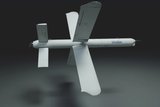Analysis: Australia experiences embarrassing amphibious gap
The Australian Army has a vexing problem. How can it deliver its M1A1 AIM Abrams main battle tanks (MBTs) ashore from the Royal Australian Navy’s (RAN) two Canberra-class landing helicopter dock (LHD) ships?
VADM Tim Barrett, the Chief of Navy, admitted at a Budget Senate Estimates hearing on 29 May, ‘We are yet to prove the ability to carry an Abrams tank.’
The crux of the matter is that the LCM-1E landing craft, built by Navantia and embarked aboard the LHDs, is struggling to handle the weight of the Abrams MBT.
Australia acquired 12 LCM-1E landing craft from Spain,
Already have an account? Log in
Want to keep reading this article?
More from Land Warfare
-
![Germany signs multi-billion-dollar deals for 6x6 CAVS and GDELS Eagle vehicles]()
Germany signs multi-billion-dollar deals for 6x6 CAVS and GDELS Eagle vehicles
The order is a further boost for the Common Armoured Vehicles System programme which has notched notable successes in the past 12 months. The first vehicle, made in Finland, will be delivered next year with local production expected to ramp up in 2027.
-
![Rheinmetall and KNDS tank tie-up narrows trans-European options]()
Rheinmetall and KNDS tank tie-up narrows trans-European options
The French and German governments signed an agreement in June 2018 to cooperate on the development of a new main battle tank under the Main Ground Combat System programme but the effort has struggled. This new agreement may damage it further.
-
![2025 land market review: British Army woes, European heavy armour and US MBT progress]()
2025 land market review: British Army woes, European heavy armour and US MBT progress
The last year has seen several major procurements in the land market. Shephard’s Dr Peter Magill reviews the main trends and themes in land procurement of 2025.
-
![Hungary set to begin using Hero 400 loitering munitions]()
Hungary set to begin using Hero 400 loitering munitions
Developed by Israel's Uvision and with systems being sold in the thousands to multiple European NATO countries and the US, the Hero family of loitering systems is also in production in the US and Italy, the latter through Rheinmetall.























